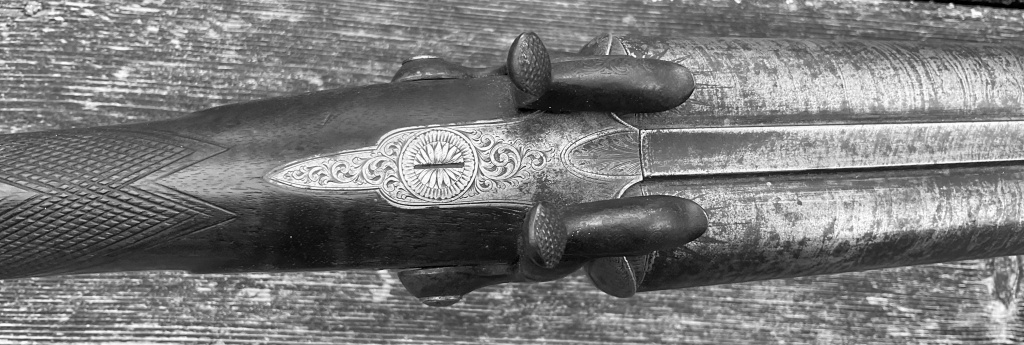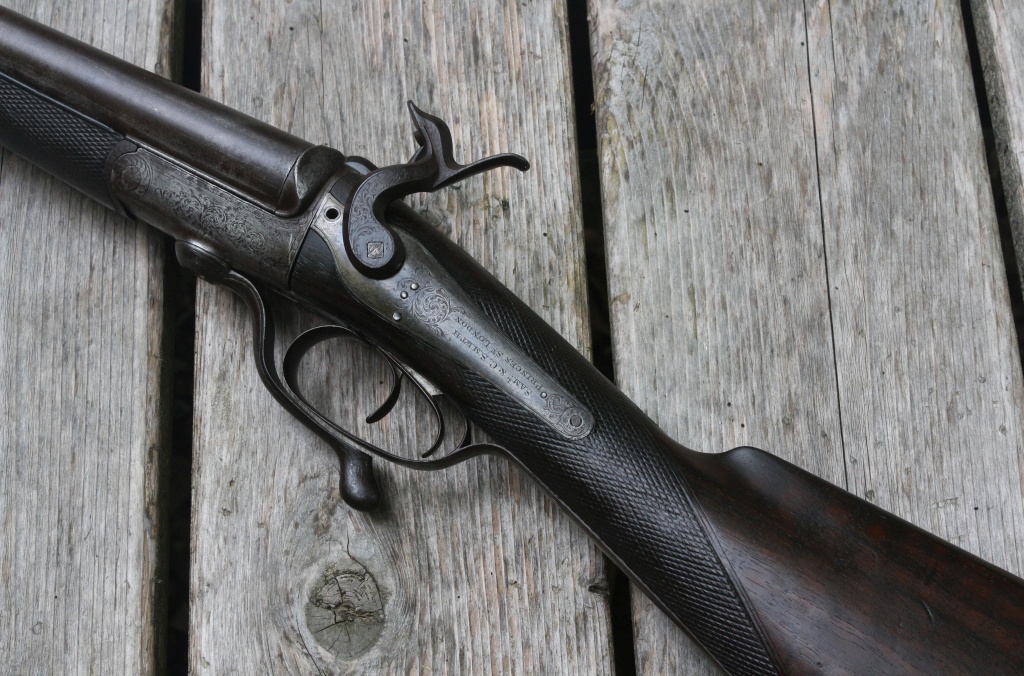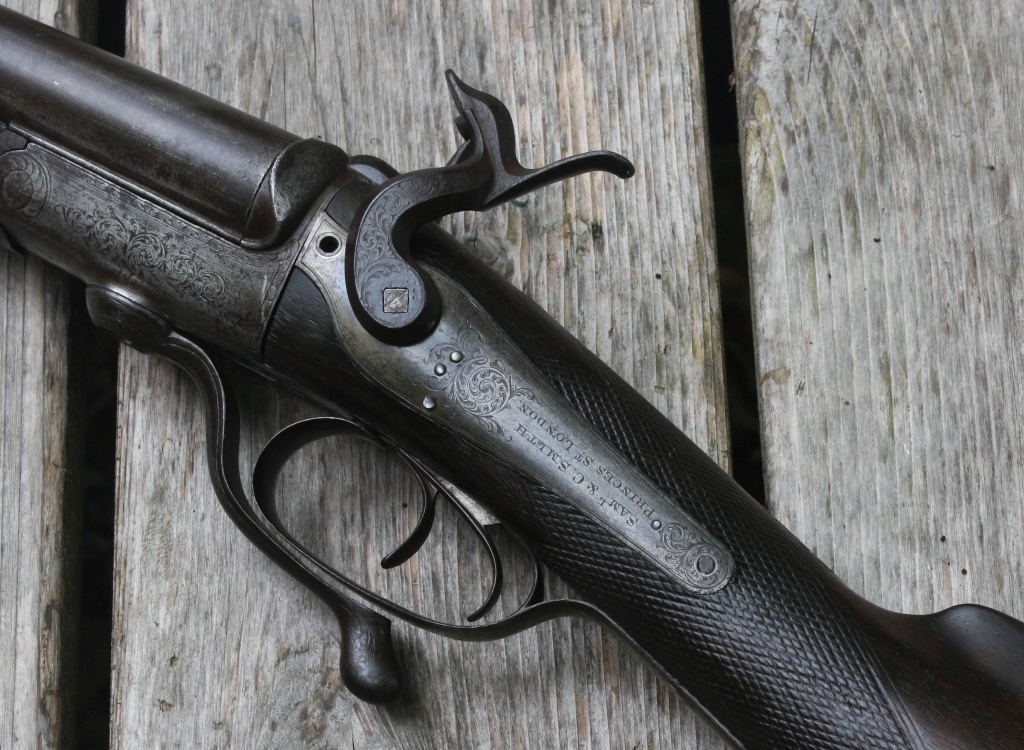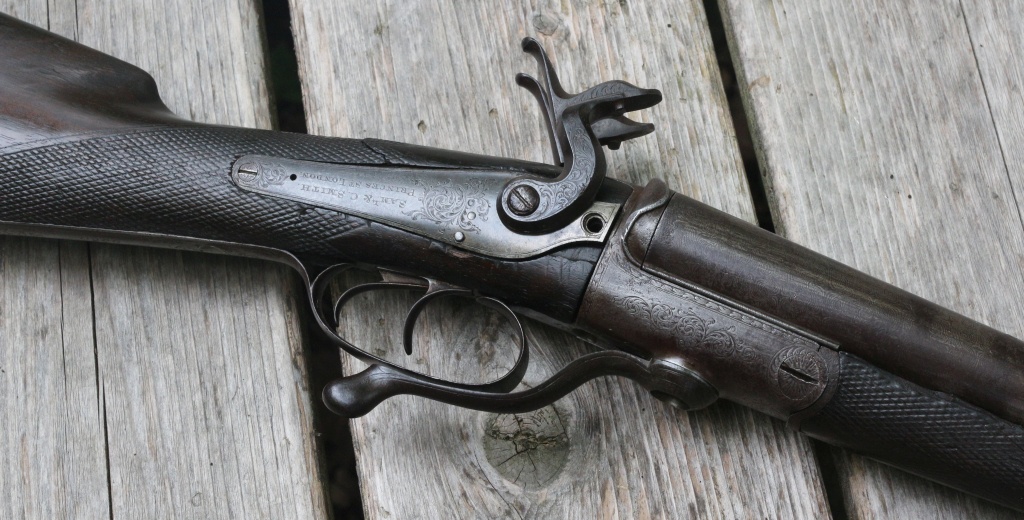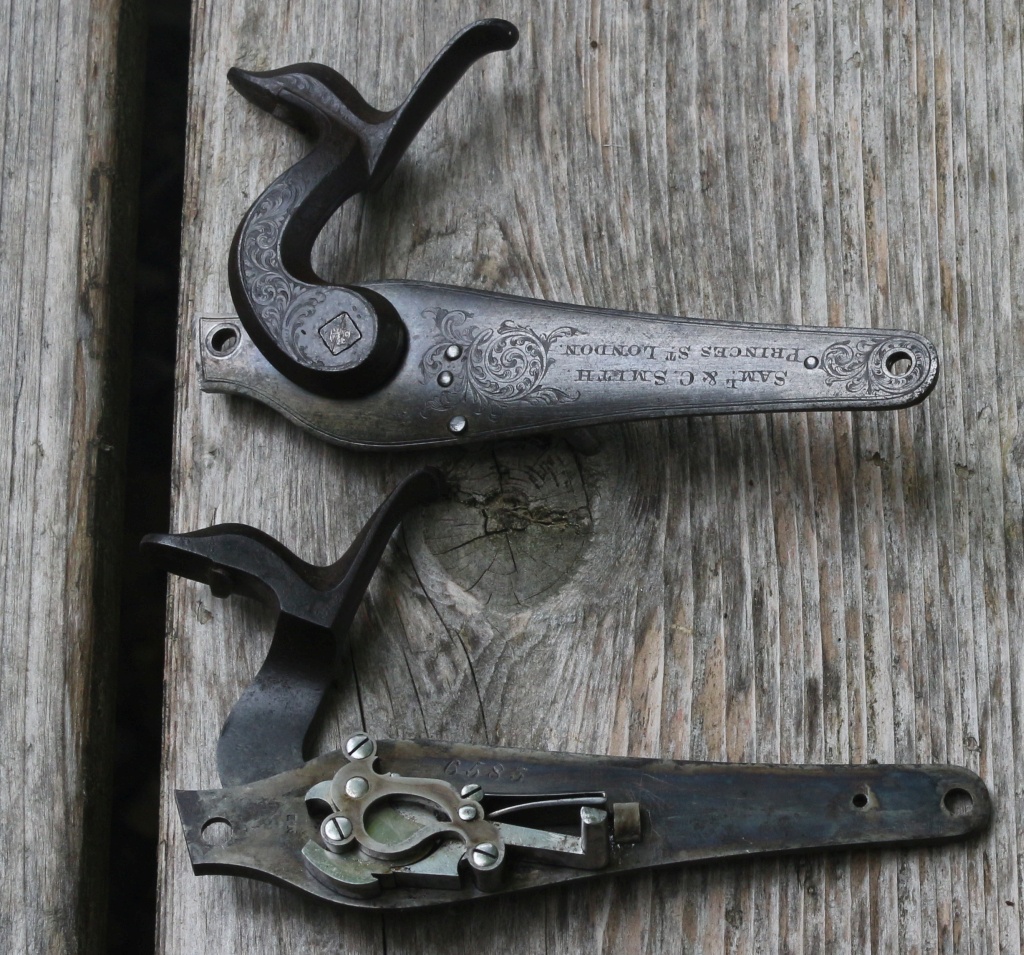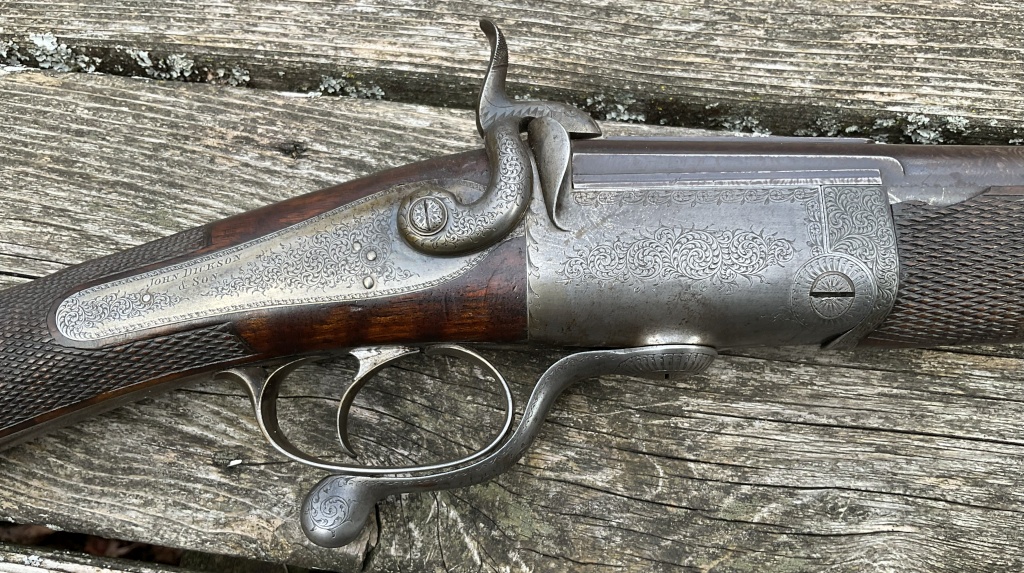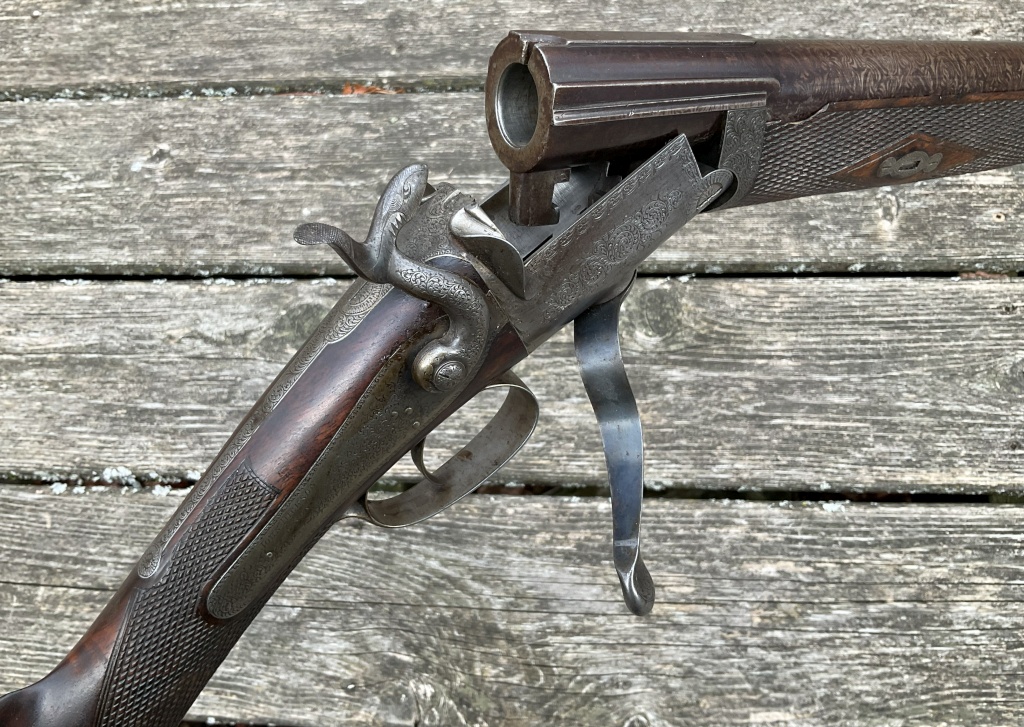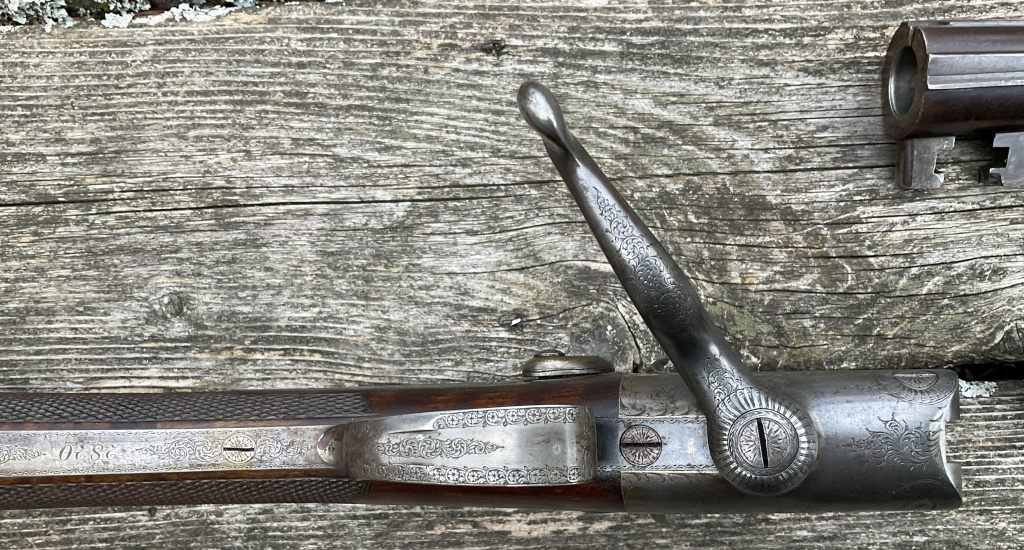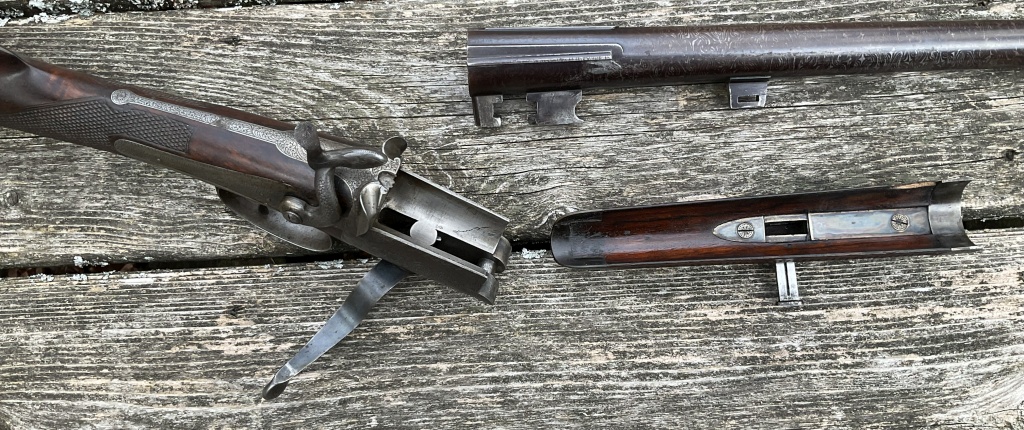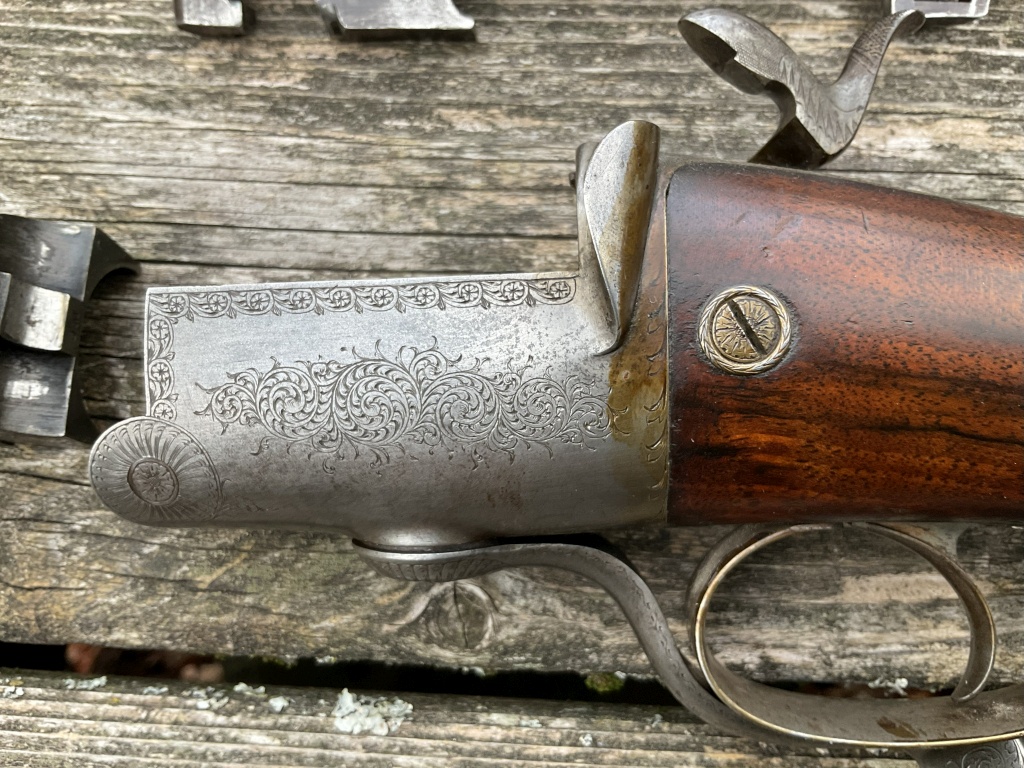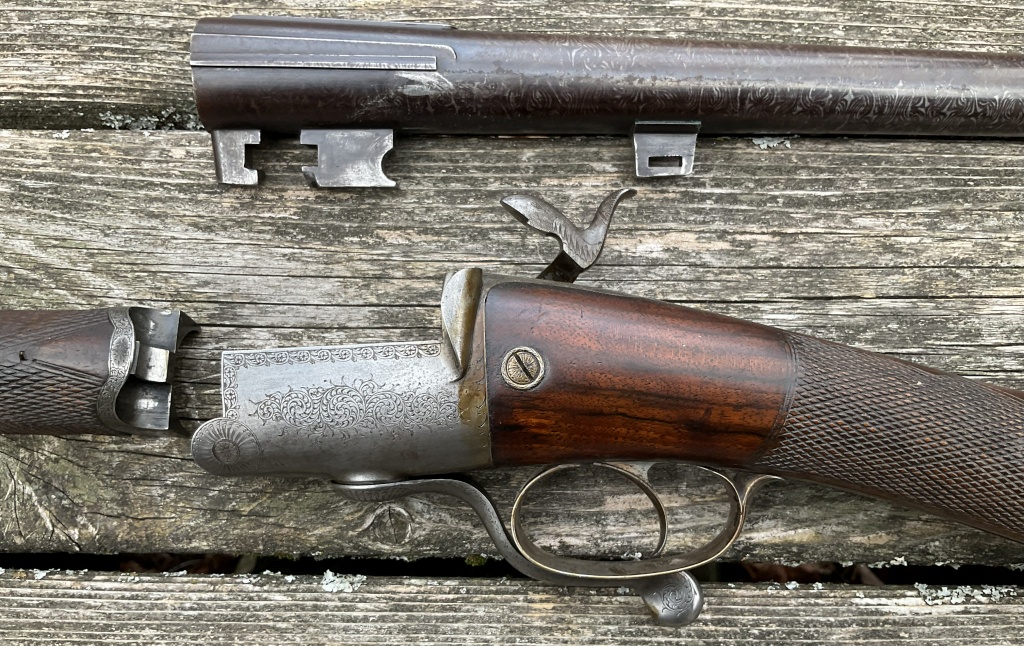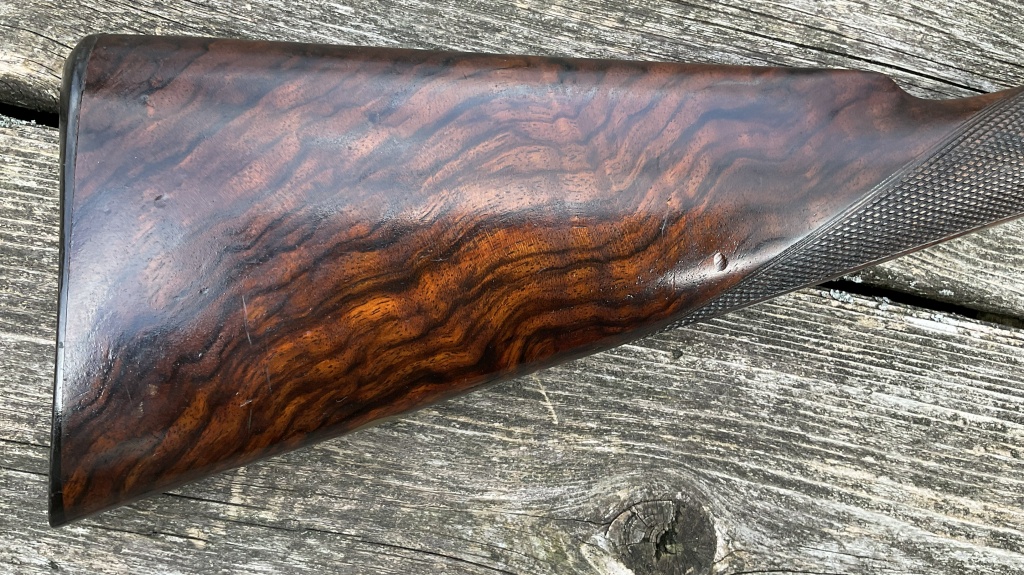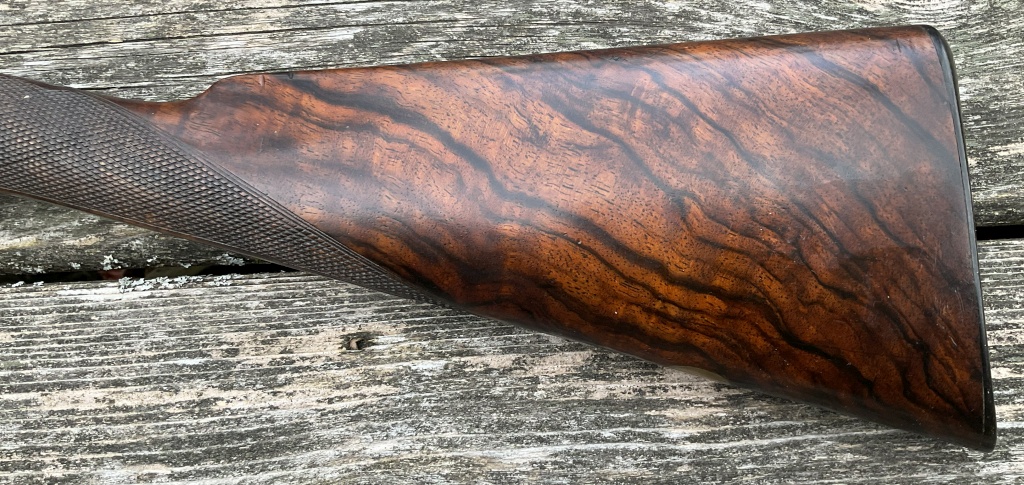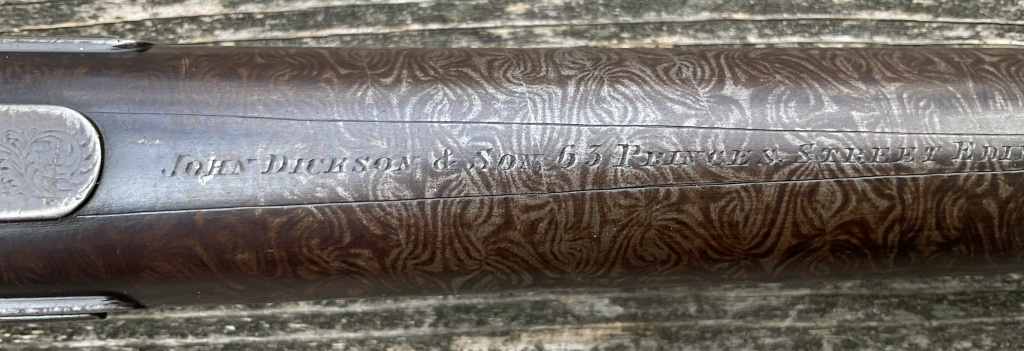Generally speaking, British guns provide us with varying levels of information, which can greatly add to their allure. The maker/retailer is usually identifiable, and the gun may provide further clues as to who made the locks and barrels, as well as who actioned the gun, if you look closely enough. That does not cover all the hands that were instrumental in its manufacture, but it provides a good starting point. From there, information might exist as to who first ordered/purchased the gun, from either the maker’s records if they have survived (no thanks to the Luftwaffe), or identifying initials or family crests engraved on the stock escutcheon. Readers of this thread have so far seen quite a few examples that are rich in provenance, from their build to their treasured ownership. But occasionally a gun surfaces that resists all efforts to extract information, leaving us curious as to the backstory. Today’s gun is one of these. It is a mid-1860s gun, very worn and hard-used, as many pin-fires were. It came out of a Birmingham workbench, of that I am certain, one of the over 500 firms operating in the Gun Quarter at the time, a fact that hardly narrows it down. Unlike on the Continent, where producing guns without attribution is common (often mislabelled ‘guild guns’), British guns usually at least have the retailer’s mark, even if only from a general merchant, an ironmonger (hardware store), or a jeweller/pawnbroker or second-hand dealer. The British gun trade was based on reputation, and sport shooting was a class affair where guns conferred discreet bragging rights. Guns destined for the lowest social rank of gamekeeper would still typically carry a name (though few gamekeepers would have the privilege of shooting a breech-loader, at least in the 1860s). So, a gun without information is mysterious and worth a closer look.
On the surface, it is a 12-bore rotary-underlever pin-fire sporting gun of typical form, without a serial number. It has the ubiquitous post-1862 double-bite screw-grip action, and the 30” laminated (not damascus) barrels have Birmingham proofs. The bore marks (14 and 13) denote a notable bore tightening, not unusual for pre-choke barrels. One might think an unmarked gun would be an entry-level, low-quality piece; however, this is not the case here. More expensive bar locks, a fluted action bar, quality engraving, fine chequering (though with some slightly imperfect edges), a nicely figured stock… Everything about it suggests a good-quality provincial gun, or a second-quality gun from a known maker’s establishment. Perhaps the only hint it might have been destined for a provincial gun seller or general merchant is its weight; at 7 ½ pounds, it is slightly heavier than a typical 12-bore game gun from a competitive maker.
A maker’s name is added to the lock plates before hardening and the final finishing steps, usually when the engraving pattern is done. A rib inscription could be added at any time before the browning process. To sell a finished gun without a name is not typical, and one can speculate as to the reasons. Was it made ‘on spec’ in a workshop, to keep workmen busy? When commissions were not coming in, it might have been prudent to keep output going, but in reality most in the trade were day labourers, and no commissions meant no work, and few workshop operators could front the cost of materials without the possibility of reimbursement.
It could be that the gun was made with the intention of adding a name, but the retailer didn’t bother, and the buyer didn’t care. I’m not convinced by this, as even a second- or third-quality pin-fire represented a significant investment, even if not anywhere in the same league as London guns and long-established gunmakers, and a nameless gun confers no social status. Would you buy a $15K Rolex watch and tell the factory to leave out the name? Possible, but improbable. I mention watches because of my 11 years of living in Switzerland; a Swiss can spot what watch you’re wearing and assess your social status from twenty paces. OK, I’m exaggerating a little, but not by much. Whose gun you shot with in Victorian Britain established your wealth and social bona fides, as did your carriage, choice of tailor, etc. No, I’m a bit stumped on this one. In the 1950s, sure, not unusual. But 1860s? Not so much.
Now, try to see past the rust-discolouration, neglect, and ravages of time; it would have been a handsome gun when new. Yes, I could polish away much of the discolouration and re-brown the barrels – it would look much improved. But I tend to leave antiques in the condition I find them.

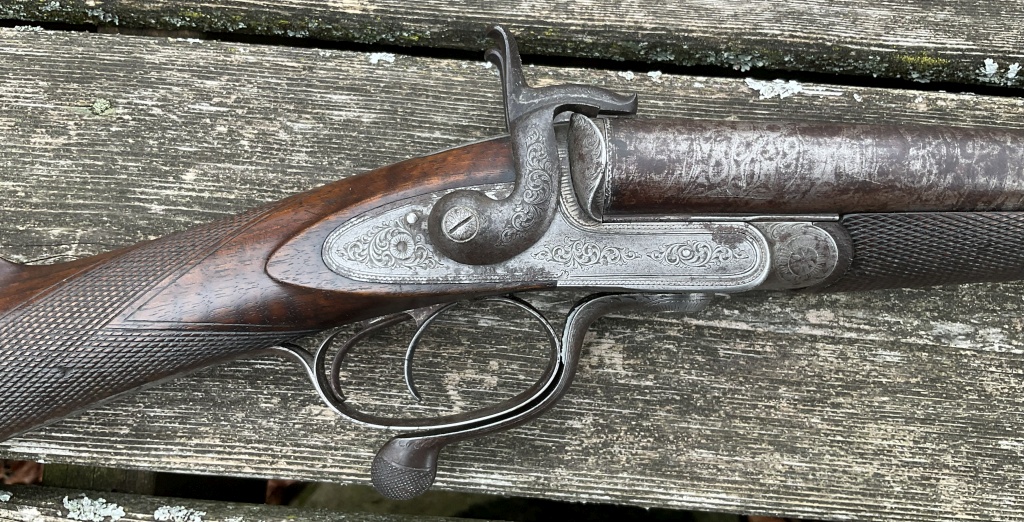

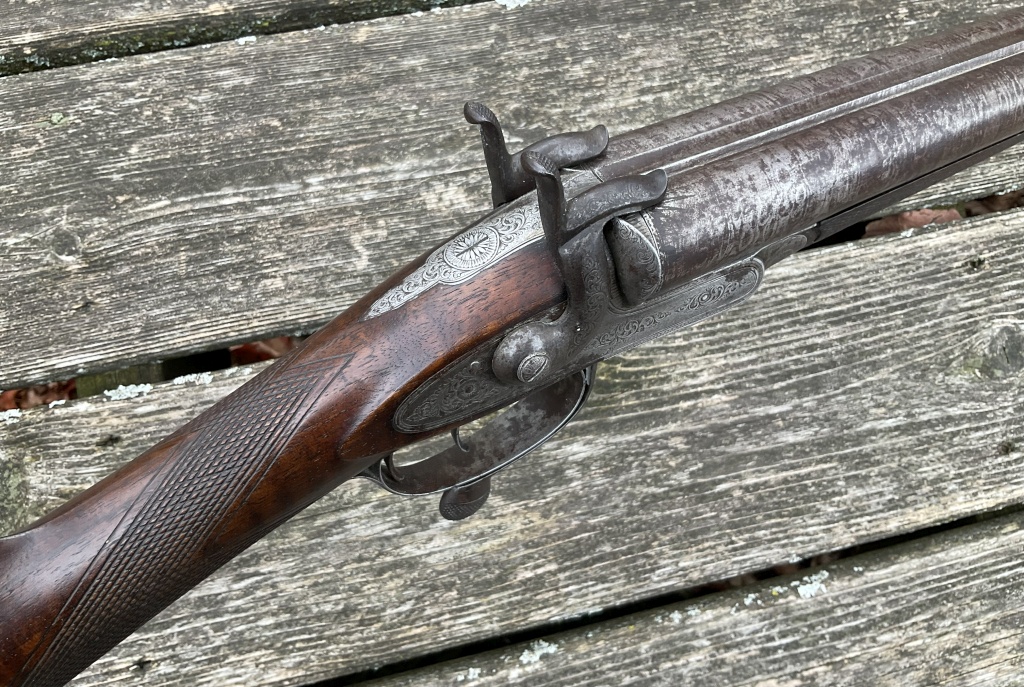


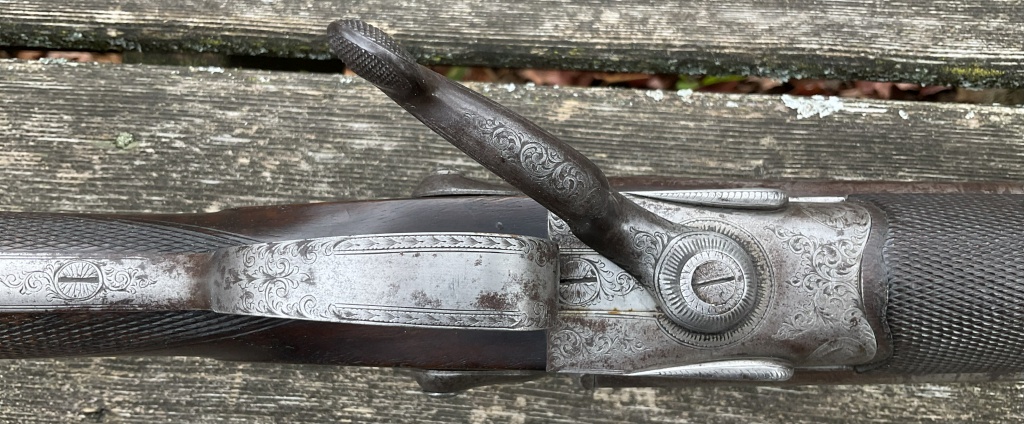
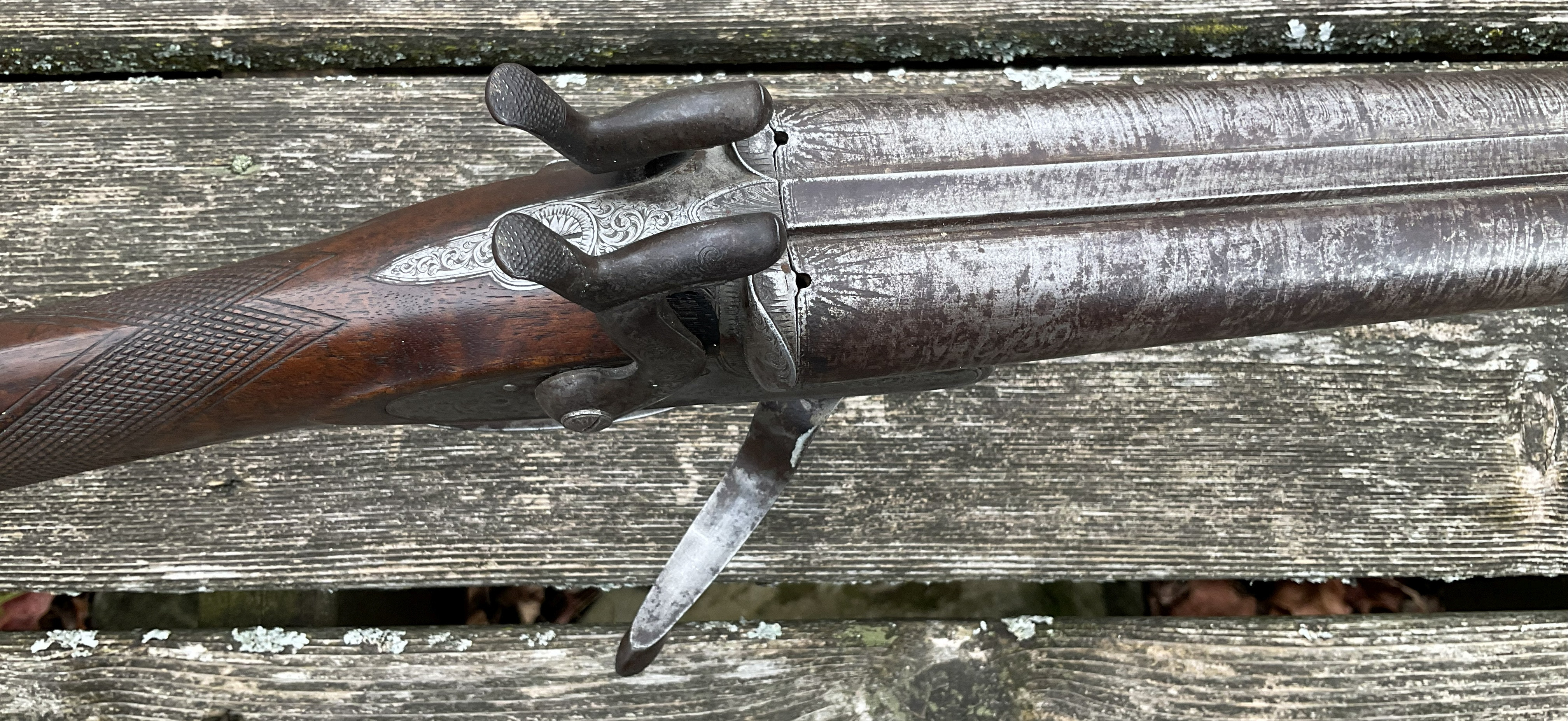
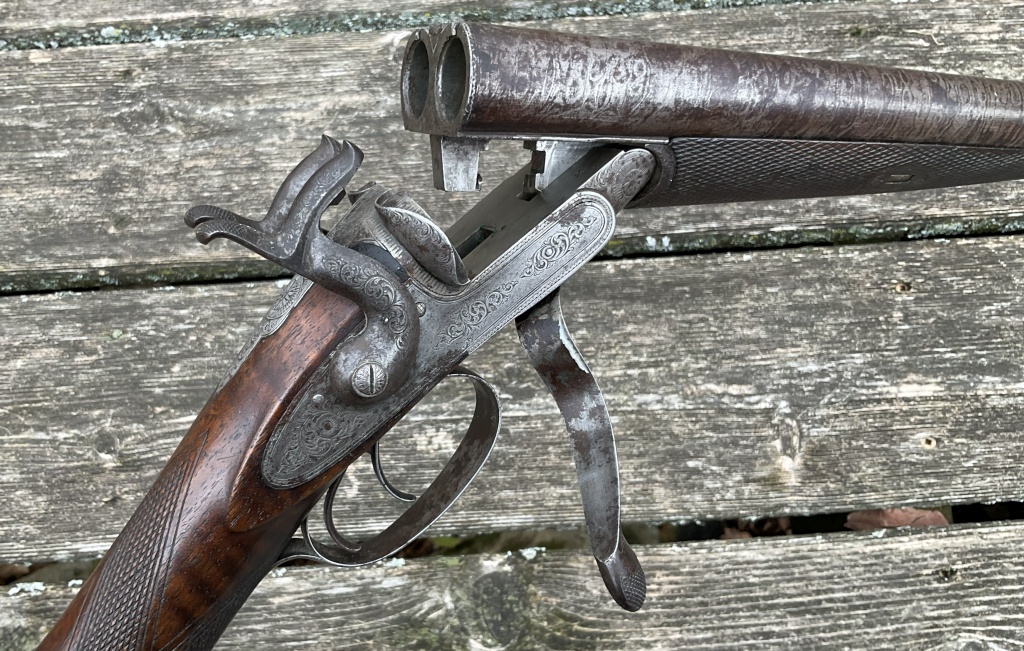
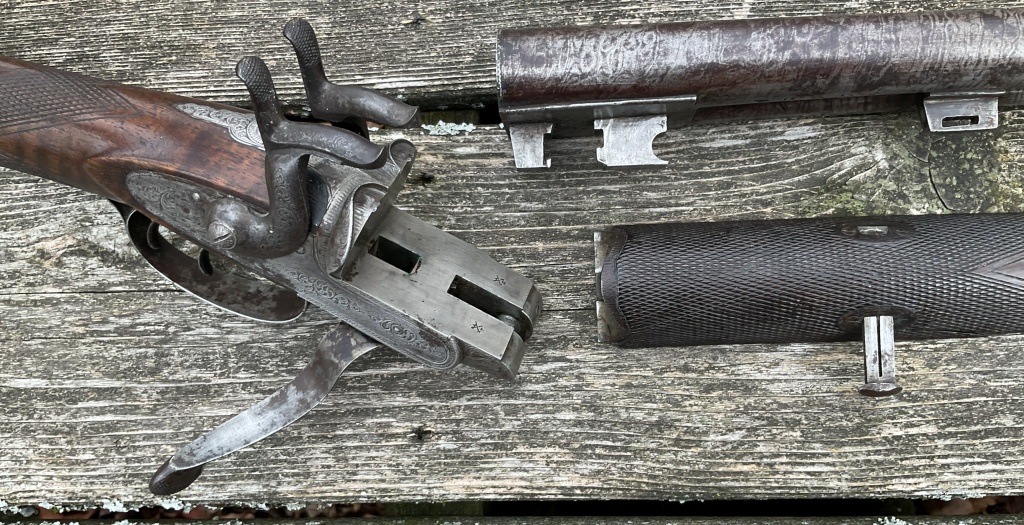

On the surface, it is a 12-bore rotary-underlever pin-fire sporting gun of typical form, without a serial number. It has the ubiquitous post-1862 double-bite screw-grip action, and the 30” laminated (not damascus) barrels have Birmingham proofs. The bore marks (14 and 13) denote a notable bore tightening, not unusual for pre-choke barrels. One might think an unmarked gun would be an entry-level, low-quality piece; however, this is not the case here. More expensive bar locks, a fluted action bar, quality engraving, fine chequering (though with some slightly imperfect edges), a nicely figured stock… Everything about it suggests a good-quality provincial gun, or a second-quality gun from a known maker’s establishment. Perhaps the only hint it might have been destined for a provincial gun seller or general merchant is its weight; at 7 ½ pounds, it is slightly heavier than a typical 12-bore game gun from a competitive maker.
A maker’s name is added to the lock plates before hardening and the final finishing steps, usually when the engraving pattern is done. A rib inscription could be added at any time before the browning process. To sell a finished gun without a name is not typical, and one can speculate as to the reasons. Was it made ‘on spec’ in a workshop, to keep workmen busy? When commissions were not coming in, it might have been prudent to keep output going, but in reality most in the trade were day labourers, and no commissions meant no work, and few workshop operators could front the cost of materials without the possibility of reimbursement.
It could be that the gun was made with the intention of adding a name, but the retailer didn’t bother, and the buyer didn’t care. I’m not convinced by this, as even a second- or third-quality pin-fire represented a significant investment, even if not anywhere in the same league as London guns and long-established gunmakers, and a nameless gun confers no social status. Would you buy a $15K Rolex watch and tell the factory to leave out the name? Possible, but improbable. I mention watches because of my 11 years of living in Switzerland; a Swiss can spot what watch you’re wearing and assess your social status from twenty paces. OK, I’m exaggerating a little, but not by much. Whose gun you shot with in Victorian Britain established your wealth and social bona fides, as did your carriage, choice of tailor, etc. No, I’m a bit stumped on this one. In the 1950s, sure, not unusual. But 1860s? Not so much.
Now, try to see past the rust-discolouration, neglect, and ravages of time; it would have been a handsome gun when new. Yes, I could polish away much of the discolouration and re-brown the barrels – it would look much improved. But I tend to leave antiques in the condition I find them.


























































